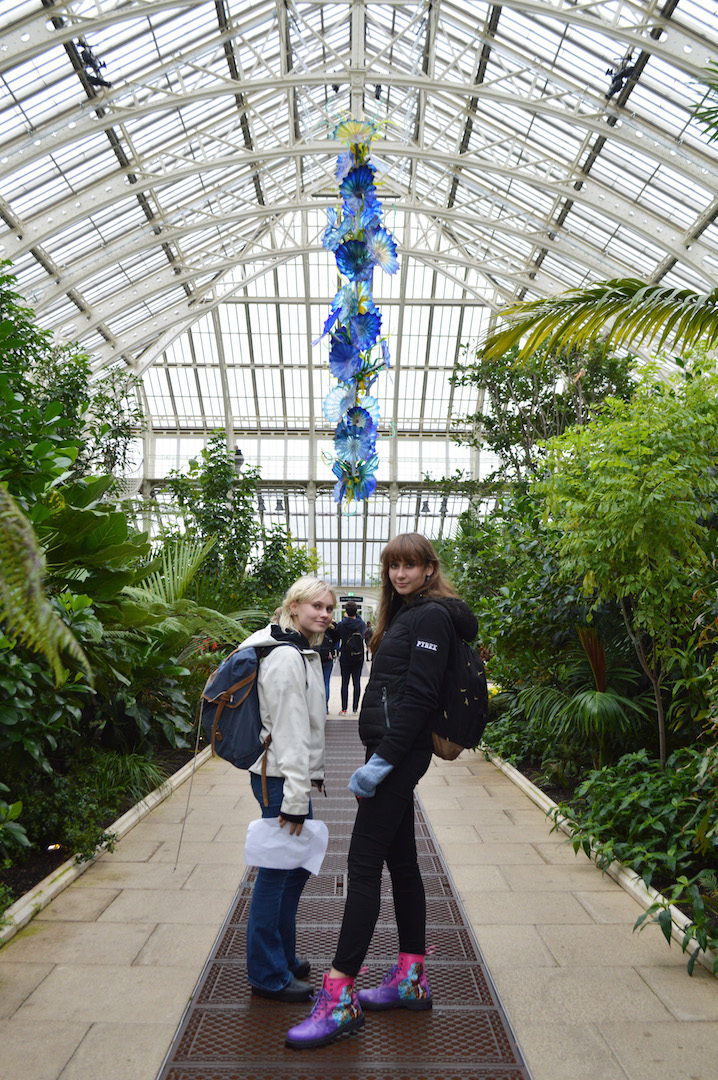
Sixth Form History of Art students recently visited Kew Gardens to see an exhibition of Dale Chihuly's blown glass works.
As part of their Nature in Art module, students were asked to consider the experience of seeing artwork outdoors, rather than in an interior gallery space.

Lower Sixth student Ginevra explains, "The space, especially in the Temperate House, was very vast as most of the smaller works were carefully placed between the different plants and foliage that was part of the greenhouse. Chihuly placed them as though they were part of the natural composition of the verdure, although they stand out with their brighter, bolder colours and quite asymmetrical shapes. I personally preferred seeing them in an open space rather than in a gallery as it changes how you see them overall, and how they fit or don’t perhaps fit into the greenery. It also links with the message that Chihuly is perhaps trying to convey to the viewer, that nature is, in fact, unpredictable and organic in its own unique way.”


Sally also notes the impact of Chihuly's choice of glass as a natural material, “Art exhibitions are archival objects in their own right, important indicators of perception and appreciation of art and artists at a certain point in time. The experience of being outside within the environment of Chihuly’s exhibition vastly differs from a normal indoors gallery. Firstly, the outdoors primarily celebrate an artist's connection with nature using natural materials, in Chihuly’s case his natural material is sand, which he melts to create glass. Chihuly’s exquisite artworks are often described as exaggerated celebrations of what is found in nature, for example, the Sapphire Star, whose vibrant blue colour stands out against its surroundings.”


Darcy noted the dynamic nature of the outdoor setting as seasons and weather changes the space and the works themselves. “The thing that I found most interesting about exhibition space, was how the season and time of day could alter our perspective of the sculptures. Unfortunately the day we visited was overcast and rainy, yet this made the sculptures appear more vibrant in contrast to the skies, and playing of the lush green of the wet grass, helping to enhance the colours whilst also to heighten the smooth texture of the material used. Undoubtedly had we experienced it during summer or on a sunny day, we would be able to see different things, as different features would be enhanced, perhaps the traslucence of the material, seeing it at night as well would change our opinion, creating a number of possibilities and different aspects we can take away form Chihuly and his work.”








